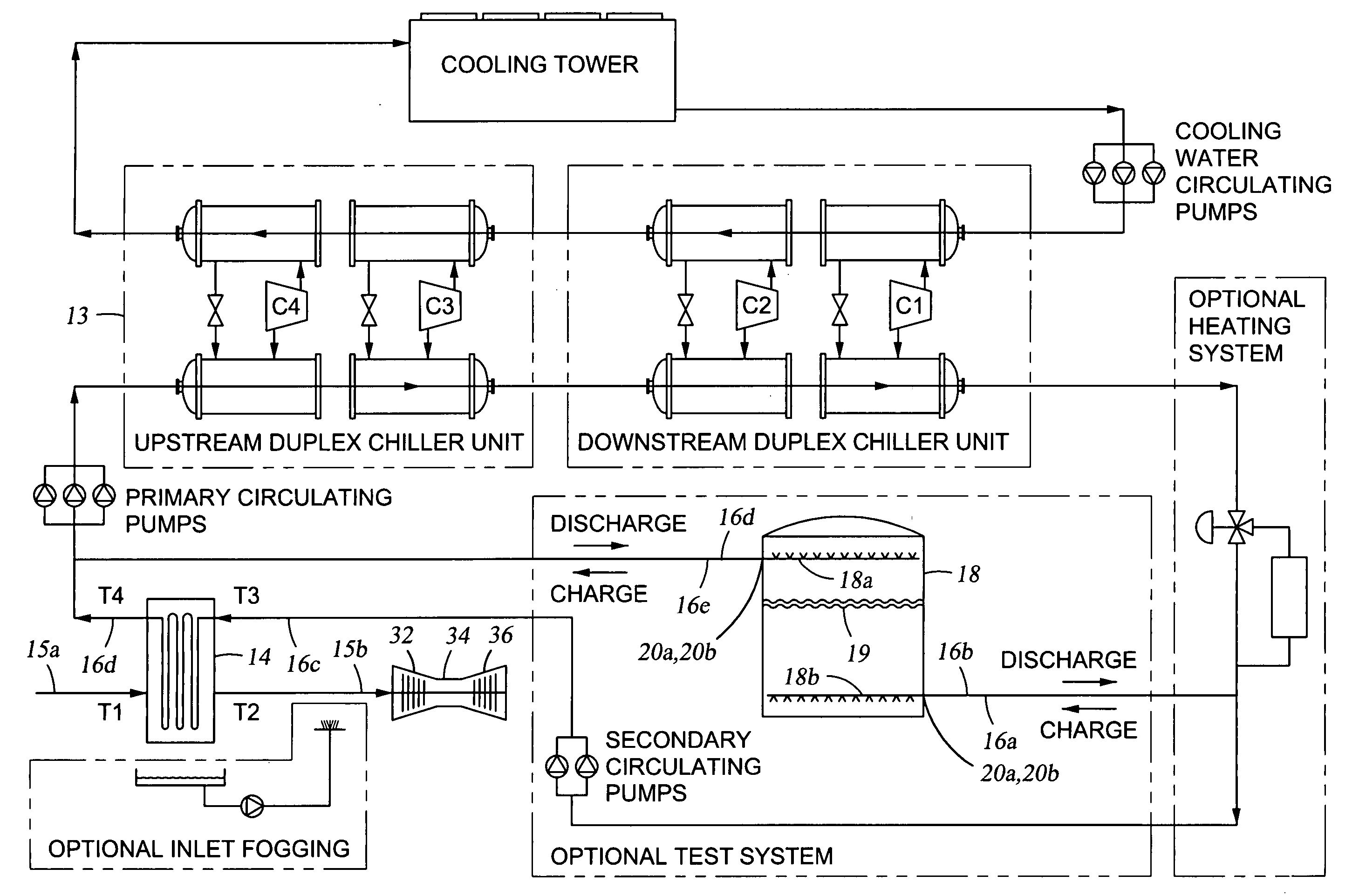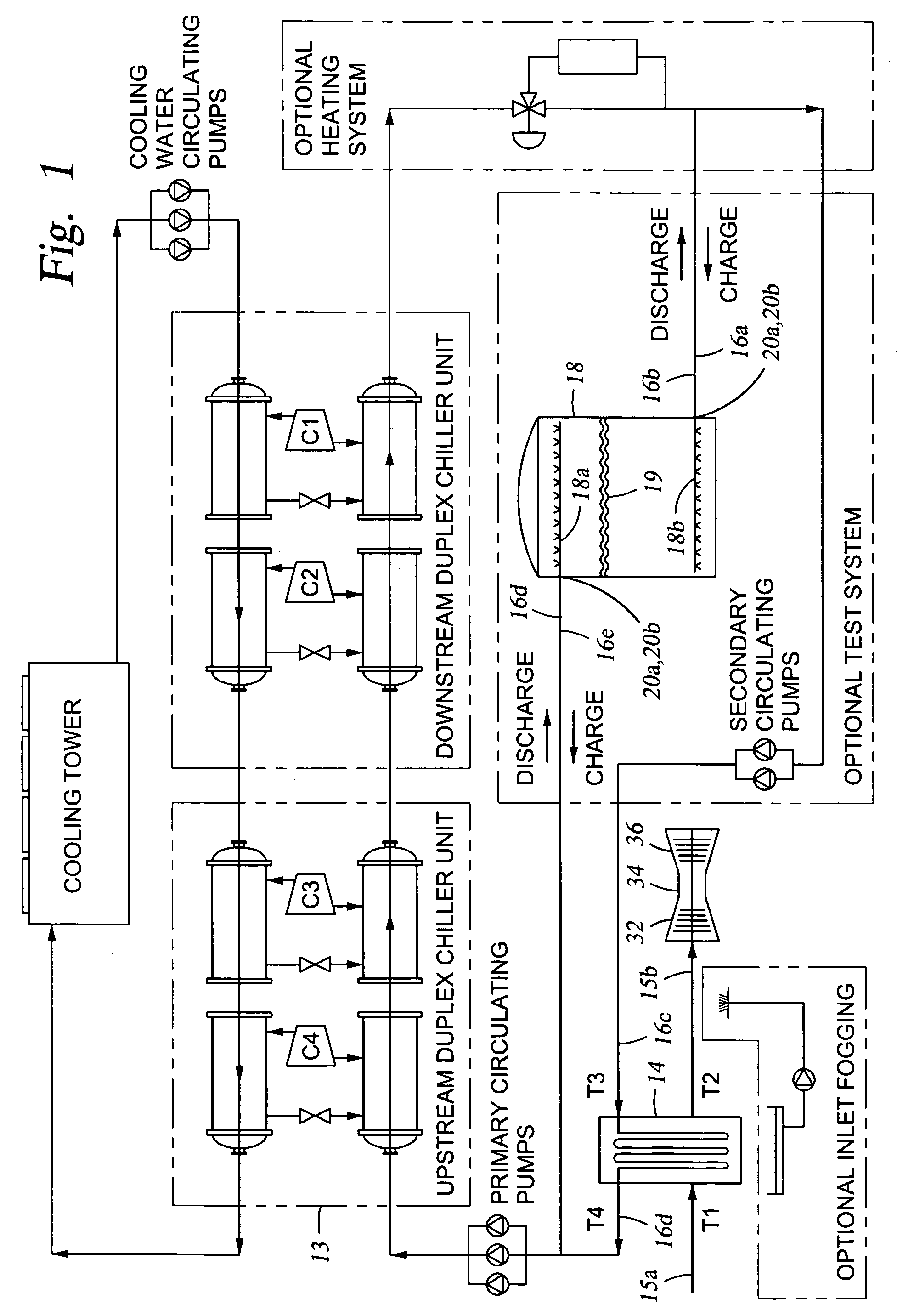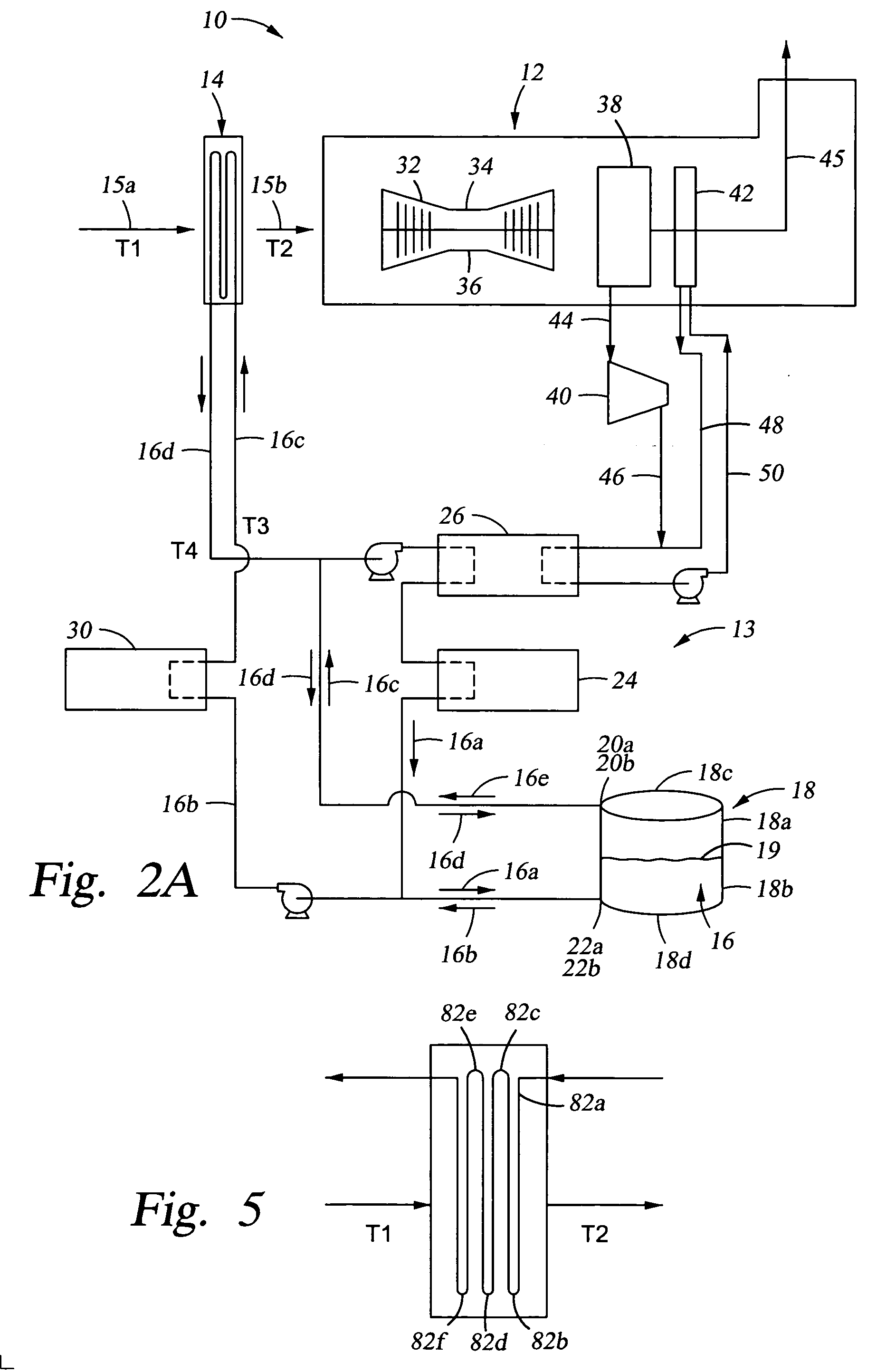Method of chilling inlet air for gas turbines
- Summary
- Abstract
- Description
- Claims
- Application Information
AI Technical Summary
Benefits of technology
Problems solved by technology
Method used
Image
Examples
Embodiment Construction
Specific embodiments of the invention will now be described. However, a person of ordinary skill in the art will recognize that the invention will actually be defined by one or more of the claims, rather than the description below. Depending on the context, all references to the “invention” below may in some cases refer to certain specific embodiments only. In other cases it will be recognized that references to the “invention” will refer to subject matter recited in one or more, but not necessarily all, of the claims.
A. Inlet Air Cooling
Generally, referring to FIG. 1, the overall apparatus 10 includes a conventional gas turbine system 12 having an air chiller 14, e.g., a conventional cooling coil, for lowering the temperature of inlet air, shown schematically by arrow 15a, from ambient temperature (T1, e.g., about 90° F. (about 32° C.), or in the range of from about 70° F. (about 21° C.) to about 85° F. (about 29° C.) to a range of from about 100° F. (about 38°C.) to about 115...
PUM
 Login to View More
Login to View More Abstract
Description
Claims
Application Information
 Login to View More
Login to View More - R&D
- Intellectual Property
- Life Sciences
- Materials
- Tech Scout
- Unparalleled Data Quality
- Higher Quality Content
- 60% Fewer Hallucinations
Browse by: Latest US Patents, China's latest patents, Technical Efficacy Thesaurus, Application Domain, Technology Topic, Popular Technical Reports.
© 2025 PatSnap. All rights reserved.Legal|Privacy policy|Modern Slavery Act Transparency Statement|Sitemap|About US| Contact US: help@patsnap.com



